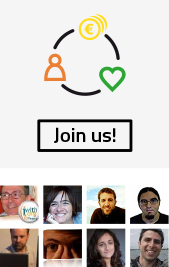Each project is 'chopped' into small parts that have to be completed and delivered in a few weeks. The objective is to develop quality products and services that respond to the needs of customers whose priorities change at a growing rate.


These methodologies were born in the software development industry, when companies in this sector understood that the traditional way of working delayed the delivery of the final product a lot. Processes normally based on a closed contract, with little communication from the workers, which led to poor quality deliverables.
In 2001, the CEOs of the main software companies in Utah met. There they shared the best practices of each company and created the 'Agile Manifesto'.
A model of continuous improvement in which it is planned, created, the result is checked and improved. Something that is constant and fast, with reduced delivery times that seek to avoid dispersion and focus all attention on a task entrusted.
The main advantages of 'agile' are:
1. Improve quality: Minimize errors in deliverables and improve the experience and functionality for the client.
2. Greater commitment: Improves employee satisfaction and generates team awareness.
3. Speed: Shortens production cycles and minimizes reaction times and decision making.
4. Increased productivity: By allocating resources better, and more dynamically, improves production according to the priorities of the company.
Its operation in the work environment
To give an example, in the scrum framework, the project is divided into small parts that have to be completed and delivered in short terms, called 'sprints'. In this way, if any changes have to be made, only changes are made to the party involved and in a very short time. At iwith.org we use the Scrum methodology since 2013.
Another of the most characteristic features of agile methodologies is the use of multidisciplinary teams that work together, side by side, throughout the process. Thus, for example, the head of marketing can give feedback on how the final product is turning out to the technician who is performing a specific task.
In this way, and together with the faster, earlier and more frequent deliveries, the resulting product is exactly what the market is demanding.
Agile teams hold daily sessions in which each member has to explain three things: what tasks he has completed, what he is going to do and, if there are any, to point out the impediments that have not allowed him to advance.
These meetings are called 'dailys' and they help all the team members know where each work is and they are aware of how they can collaborate so that the project can keep moving forward. The philosophy 'Agile' was born more than 10 years ago by the hand of the giants of 'software', but little by little it has been extended to other areas, including that of the Third Sector.
If you want to know more about the topic you can visit this page: https://www.agilealliance.org/agile101/the-agile-manifesto/
If you want to know more about the topic you can visit this page: https://www.agilealliance.org/agile101/the-agile-manifesto/











